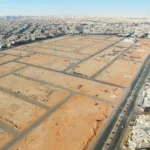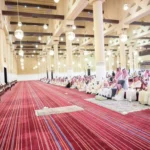The number of trips completed through passenger transport applications in the Kingdom increased during the third quarter of 2025, reaching more than 39 million trips, a 78% increase compared to the same quarter of 2024.
Riyadh accounted for 43% of the trips
Riyadh topped the list of regions in terms of the number of trips with 43.90%, while the Makkah region came in second with 22.13%, followed by the Eastern region with 14.50%, the Madinah region with 5.76%, and then the Asir region with 3.55%.
The Qassim region ranked sixth with 3.00%, the Tabuk region in seventh place with 2.49%, the Hail region with 1.85% in eighth, followed by the Jazan region in ninth with 1.13%, while the percentage in the Najran region was 0.58%, followed by the Al-Jouf region with 0.55%, then the Northern Borders region with 0.28%, and finally the Al-Baha region with 0.23%.
The authority continues its efforts to develop regulatory and legislative frameworks supporting the growth of the passenger transport applications sector, which enhances investment opportunities in it and ensures the sustainability of services and improved performance quality according to the highest standards.
Riyadh
Riyadh is the capital and largest city of Saudi Arabia, serving as the nation’s political and administrative center. Historically a walled oasis town, it was the historic capital of the First Saudi State; its modern prominence began after King Abdulaziz Al Saud captured its Masmak Fortress in 1902, unifying the kingdoms and establishing it as the heart of the modern Saudi state.
Makkah
Makkah is the holiest city in Islam, located in Saudi Arabia. It is the birthplace of the Prophet Muhammad and the site of the Kaaba, the most sacred shrine in Islam, which Muslims believe was built by Abraham and his son Ishmael. Every year, millions of Muslims perform the Hajj pilgrimage to Makkah, a religious duty that must be carried out at least once in their lifetime.
Eastern region
The Eastern region of Saudi Arabia is a historically significant area along the Persian Gulf, home to a rich heritage centered on the Date Palm. It is the heart of the country’s oil industry, with its modern history dramatically shaped by the 1938 discovery of oil in Dammam, which transformed the nation’s economy and global standing. The region is also known for its vibrant cultural traditions, including music and pearl diving.
Madinah
Madinah, also known as Medina, is a city in Saudi Arabia revered as the second holiest city in Islam. It was the destination of the Prophet Muhammad’s migration (Hijrah) in 622 CE and served as the capital of the first Muslim community. The city is most famous for Al-Masjid an-Nabawi (The Prophet’s Mosque), which contains his tomb and is a major site of pilgrimage.
Asir
Asir is a mountainous region in southwestern Saudi Arabia known for its lush green landscapes and unique cultural heritage. Historically, it was an independent kingdom before being incorporated into modern Saudi Arabia in the early 20th century. The region is famous for its traditional fortified villages, colorful folk art, and distinctive architecture featuring ornate mud-brick towers.
Qassim
Qassim is a central region of Saudi Arabia, historically known as its agricultural heartland due to its vast date palm groves and farms. The area has a rich cultural heritage tied to ancient trade routes and traditional Najdi architecture, with historic towns like Unaizah and Buraydah serving as important commercial and cultural hubs for centuries.
Tabuk
Tabuk is a city in northwestern Saudi Arabia with a history dating back to the pre-Islamic era, known for its mention in the Quran regarding the Expedition of Tabuk led by the Prophet Muhammad. Today, it serves as a gateway to several archaeological sites and is recognized for its agricultural significance in the region.
Hail
Hail is a city in northwestern Saudi Arabia with a history dating back thousands of years, serving as a key stop on ancient trade and pilgrimage routes. It is historically significant as the former capital of the Jabal Shammar emirate and is renowned for its traditional Najdi architecture. The region is also famous in Arab folklore for the legendary tales of chivalry and poetry associated with the historic figures of Antarah ibn Shaddad and the Bani Hilal tribe.






